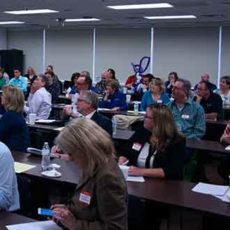If you’ve ever been frustrated trying to turn prospects into customers, you may find this information helpful. There’s a process that every customer and prospect goes through.
It’s called “The Buyer’s Journey.”
Here’s how it works:
The first step on this journey is Awareness – where your prospect becomes aware of a pain or an issue that’s bothering them. It may be that they’re not meeting their goals, the status quo is no longer working, productivity is behind, or they’re dealing with any number of other problems that come up. For you, being aware these problems is critical and it’s what makes you relevant. This step is where you want to be sure and share information that lets them know you understand what they’re going through.
The second step is Interest – where they become interested in solutions. Once your prospect has become aware of their issues, they become interested in finding a way to make this “pain” go away. This is where you share additional information and plant seeds about how you or your company can solve the problems that are keeping them up at night.
The third step is Consideration – where they are actively looking for a solution to their pain. They’re evaluating vendors, products and services. Now they’re willing to meet with you. During this phase, your prospect is narrowing down viable choices and preparing to make a purchase.
The fourth step is the Purchase. YEAH!!! This is what you’ve been working for right? Don’t stop here. This is the biggest mistake I believe people make. They hand off the customer and move on to make another sale. This is where, if you’re not careful, all of your efforts can go to waste! Instead, stay in close contact with your customer.
The fifth step of this Journey is Post-Purchase. Once your prospect has purchased, it’s very important that you stay in close contact. Your client will be expecting the results you promised. If anything goes wrong, and you’ve handed them off to someone else, you’re pretty much dead in the water. Instead, stick with them through the good, the bad and the ugly. Work through their issues or concerns as they arise. If you stay with them through this process, ensuring things go smoothly, you’ve earned the right to expand the relationship and they will purchase from you again.
The sixth and final step is Repurchase. Following the above steps can often lead to a repurchase. Keep in close contact with your customer post-purchase by checking in for feedback, offering support and problem-solving. This builds the relationship and their trust so they continue to re-purchase.
The key to business development and minimizing frustration is to know where your prospect is on the “Buyer’s Journey” and match your actions to that step.
Most of us are focused on the Purchase step and can only see what our product or service can do for the customer, so we’re trying to persuade them to buy. But what if they’re not there yet?
If we only focus on the Purchase stage in the journey, we’ll be speaking the wrong language to the prospect. It’s like talking French to someone who speaks German. They will never understand us and we’ll end up losing the sale.
When you understand the Buyer’s Journey, and are in sync with your prospect on their journey, you will convert more of them into customers. You will expand and exceed your goals. Your relationships with clients will grow as you keep them as loyal customers AND continue to get new relationships and referrals.
If you get it wrong or ignore it, you’ll have longer sales cycles, lots of activity with little productivity, and you’ll find yourself frustrated and coming up short on goals.
To summarize, it’s important to:
Know: There is a Buyer’s Journey that everyone goes through when making a purchase
Look For: Where your prospect is on that Journey
Look Out For: Using the wrong strategy at the wrong stage of the Journey
What about you? TELL US – How have you used the Buyer’s Journey to help you with your business development efforts?






